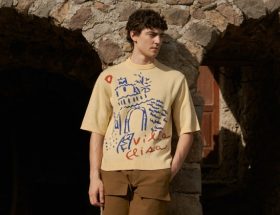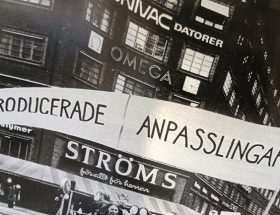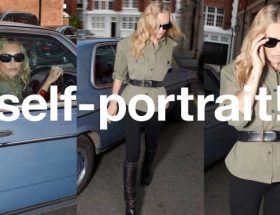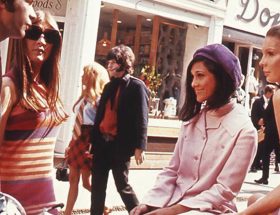Jewelry may constitute the tiniest element of an ensemble, yet it frequently leaves the most significant impression. Whether influenced by cultural heritage, elements from nature, or a precious family heirloom inherited through the years, every item carries a distinct energy that stems from its creator’s craftsmanship.
“I’m deeply inspired by my surroundings: the natural environment, geometry, pop culture, and art. I feel like an abundance of designs is pouring out of me,” states Lisa Salzer, the founder of Lulu Frost Jewelry, in an interview with Fashionista.
For many designers, the allure of accessories begins early in life. For Salzer, this attraction sparked at the age of just 13. “I began bending wire and shaping it, crafting small flower rings — it was the ’90s after all, and flower power was the theme.” After fashioning beaded petals to entwine around her copper wire, Salzer marketed her first set of items to a local boutique, sowing the seeds for what would evolve into a cherished brand. Today, her vintage-inspired jewelry has been worn and loved by Lady Gaga, Taylor Swift, and Blake Lively — among others.
Although she established her namesake brand a short while ago, designer Shana Cave has also garnered endorsements from numerous celebrities. “I received a DM from Bella Hadid’s stylist. Within that same month, Dua Lipa also reached out to me,” she reminisces to Fashionista. “I could hardly comprehend what was unfolding at the time.”
So, what is required for an independent jewelry brand to attain that level of desirability and recognition? Below, Salzer, Cave, and other designers share insights on how they initiated their businesses, the essentials of designing and launching a collection, the effects of dupe culture, and more.
How and when did you realize you wanted to be a jewelry designer?
Cave developed a fascination for natural objects during a childhood visit to the Smithsonian National Museum of Natural History. There, she spent countless hours in the rocks and minerals section. “Nature is my favorite designer,” she shares with Fashionista. Currently, her brand centers primarily on floral motifs, a form she derived from one of her early sketchbooks.
Many people, including Leslie Cherit, the founder and designer of Timeless Pearly, discover a passion for decorative items early on (Pretty Pretty Princess, anyone?). “I used to constantly alter clothes — cutting, dyeing, doing whatever was necessary to change them. Then I began experimenting with beads in a similar manner,” Cherit recalls. “My grandmother always had beautiful jewelry that I would borrow. One of the pieces I ‘borrowed’ became our hallmark charm, the Pantin, also known as Pinocchio.”
Catherine Sarr, of fine jewelry brand Almasika, had a more subdued interest in creating her jewelry that lingered in the background of her life: “After spending over a decade in the luxury diamond sector in London, I felt compelled to create something uniquely mine. I didn’t follow a traditional design route; instead, I immersed myself in the industry and collaborated closely with artisans.”
How does your educational background shape your work?
Apart from technical training and refining their craft, a successful jewelry designer and brand founder must be ready to operate a business. For Salzer, participating in Dartmouth’s Tuck Bridge Program (which she describes as “a kind of summer business boot camp”) was the critical step she needed to take to begin taking her career seriously: “It was incredibly challenging for me, being a kid from an art studio, but I persevered and discovered the numerous wonders of Excel.”
Matthew Harris, founder of Mateo New York, states that even though he attended design-focused courses, the majority of his education came from practical experience. “You must begin by grasping the fundamentals — not just sketching, but also understanding materials, proportions, and how pieces wear and feel. Intern or apprentice with a bench jeweler if possible.”
Cave describes her educational experience as “a bit random.” She earned a BFA in Fashion Design from Virginia Commonwealth University, but also studied abroad at Central Saint Martins. “In America, it tends to be more business-oriented, with decisions made based on sales potential. Conversely, in Europe — specifically at Central Saint Martins — they recognize that creating something authentic and truly original will sell, regardless. People are naturally attracted to what’s genuine.”
One of the most important lessons Cave learned in college, she states, is how to price her creations.
“The typical perception of jewelry pricing for most people is that it’s costly,” Cave elaborates. “Gold and silver are certainly pricey, but jewelry enjoys a high profit margin due to the labor involved. When you study jewelry making in school, you learn how much items are likely to (and should) cost.”
What is it like entering such a well-established, traditional






